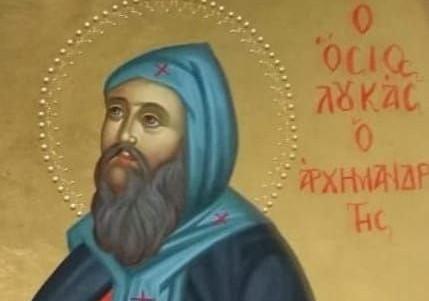LUKE ARCHIMANDRITE (mid-XI century – 1149)
St. Luke archimandrite was born in Calabria around the middle of the XI century and he was a monk in the Rossanese monastery of the “Nuova Odigitria” from where, under the will of Roger II the Norman, he went with twelve monks to Messina to found a monastic community in the rebuilt monastery of the Most Holy Savior “in the phari language”.
Initially igumeno (monastic superior) of the monastery, in 1133 he became archimandrite of the monastic confederation (archimandrite) wanted by the sovereign in 1131, which included the monasteries of Greek tradition in Sicily and Calabria.
Furthermore, he wrote for his cenobites the well-known “Tipikon”, contained in the manuscript Mess. Gr. 115, which is today preserved in the Regional University Library of Messina – by borrowing the rules contained in it from St. Basil, St. Theodore The Studite and others.
Thanks to him, the Holy Savior of Messina, equipped with a rich library and a “scriptorium” for the study of monks, became the most important cultural centre in Southern Italy.
With the favour of King Roger, the archimandrite rebuilt numerous monasteries that were abandoned and plundered under Arabs' domination and the monastic communities received enormous privileges from the king: feuds, grazing rights, exploitation of water for mills, exemptions from trade maritime duties operated with monastery's ships and more.
The moral, spiritual and disciplinary recovery imposed by Luke on his monks made him the great “reformer” of Southern Italian monasticism. He died in Messina on 27 February 1149.

